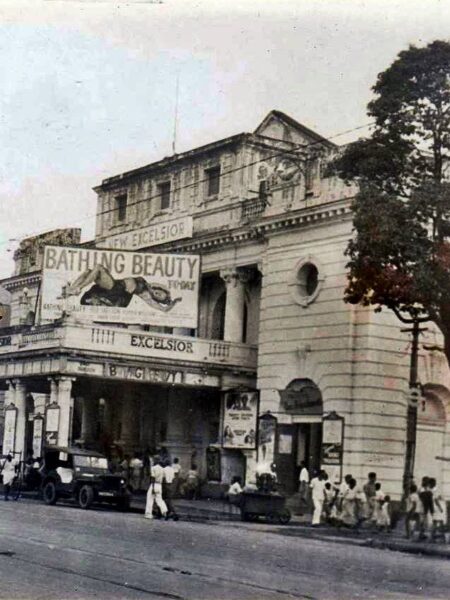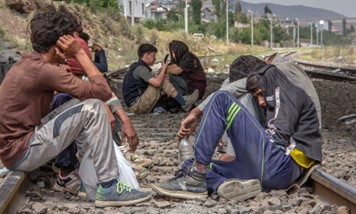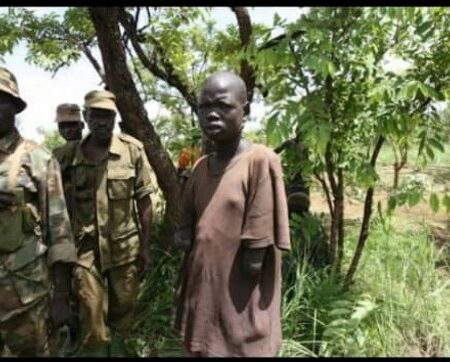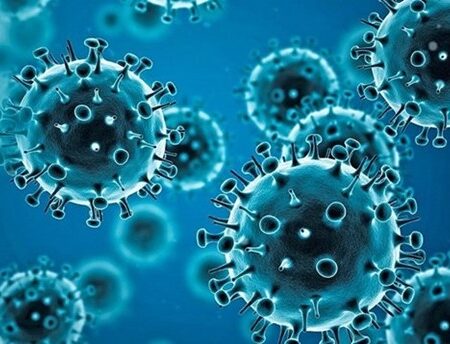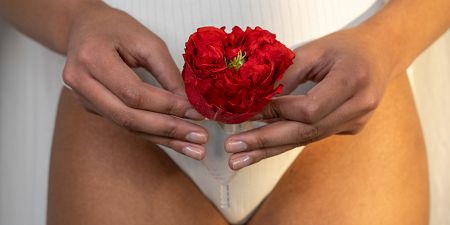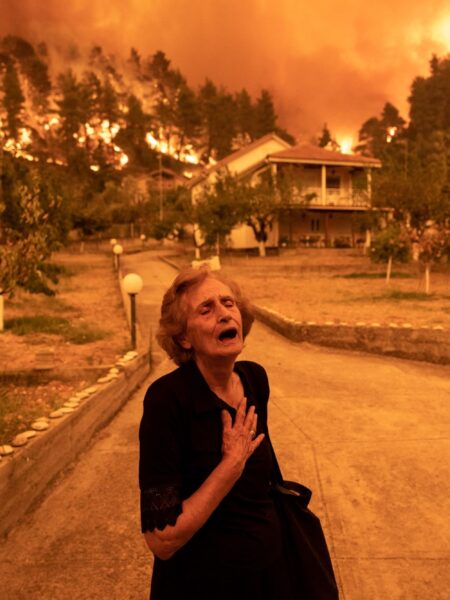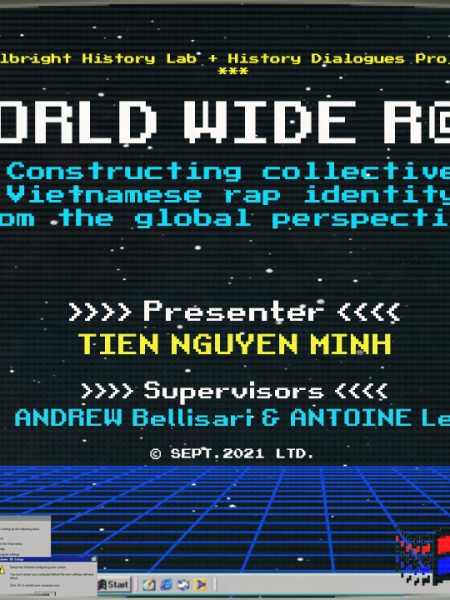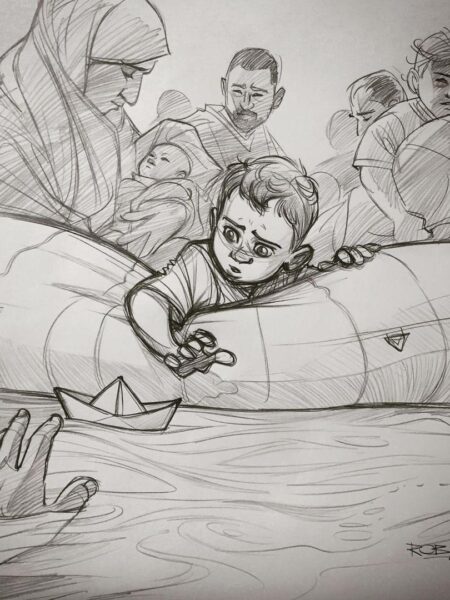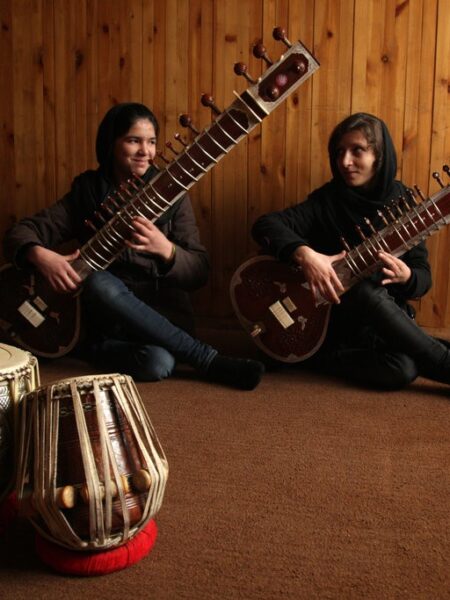Introduction:
LGBT, LGBTQ, LGBTQI, LGBTQIA+ are umbrella terms that encompasses a variety of groups, including lesbian, gay, bisexual, transgender, queer, questioning, intersex (people with two sets of genitalia), asexual, allies (community supporters), two spirit (a tradition in many First Nations that believes sexual minorities have both male and female spirits), and pansexual (Hafeez, 2017; WHO, 2022)
People who identify as LGBT are a part of the overall group of sexual and gender-diverse people. Sexual orientation, gender identity, and expression (SOGIE) is a broad concept that crosses civilizations (WHO, 2022).
LGBT community face a variety of stigma as a result of their sexualities, gender orientations, behaviours, and relationships (Altman et al. 2012; Herek 2007). They are prone to psychological problems due to stigmatization, persecution, and marginalization in society (Frisell et al. 2010; Frost and Meyer 2009; Hatzenbuehler et al. 2008; King et al. 2008; Wohl et al. 2011). LGBT individuals are more likely to be subjected to human rights abuses such as brutality, torture, prosecution, forceful medical interventions, discriminatory attitudes, and incorrect stigmatizing in healthcare institutions (WHO, 2022).
LGBT youth are more likely to participate in high-risk sexual practices, increasing the risk of sexually transmitted diseases (STDs) (Benson, 2005). They are also at a higher risk of recreational drug misuse, obesity, and a variety of cancer-related risks (Mayer, 2014; McCabe et al., 2010). LGBT students are commonly bullied at school, and they are more likely to get into conflicts, skip school, and become isolated (Díaz et al., 2001; Robinson, 2013). Another key issue is family rejection, which has been reported often in homes with LGBT adolescents and has resulted in interpersonal issues between youth and their families (Savin-Williams, 1998; D’Augelli, 2005).
Internalizing sentiments of victimization owing to homophobia, transphobia, or biphobia, and being discriminated against by academic, healthcare, or religious institutions, can result in severe issues for sexual and gender minority kids at this crucial moment because adolescence is a critical phase of brain development, with heightened stress-related impacts on mental health, significant memory system development (Fuhrmann et al., 2015).
Globally, from the legal perspective, 71 jurisdictions make private, consenting, same-sex sexual conduct illegal. In addition, 43 jurisdictions use laws against ‘lesbianism, “sexual intercourse between homosexual couple,’ and ‘gross indecency’ to prosecute sexual conduct between women. In addition, 11 jurisdictions have either the death sentence or the possibility of private, consenting same-sex sexual conduct. Finally, 15 jurisdictions use ‘cross-dressing,’ ‘impersonation,’ and ‘disguise’ laws to penalize transgender people’s gender identification and/or voice. Many more nations have laws that penalize same-sex activities, vagrancy, hooliganism, and public order violations, which target transgender people (Human Dignity Trust, 2022).
Literature Review:
Lebanon has always been seen as a more liberal, culturally varied, and, in some ways, accepting location than other Middle Eastern nations when it comes to homosexuality. People who are LGBT or are suspected of being LGBT, on the other hand, are frequently assaulted and threatened in Lebanon (Abdessamad, 2014; Mikdashi, 2022).
Lebanon as a country is going through a particularly challenging situation in its history where it was wrecked by a catastrophic explosion at Beirut’s port on August 4, 2020. Primary data acquired from LGBT Civil Society Organizations (CSOs) shortly after the explosion revealed that the bomb had a detrimental impact on the LGBT community (Aouad, 2021). The area’s most severely affected by the Beirut Blast, Mar Mkhayel, Gemmayze, and Geitawi are recognized for being Beirut’s most queer-friendly neighbourhoods.
In addition to the Beirut explosion, the country was already mired in its worst economic downturn since 1990, resulting in economic crisis, rising inflation, and dire social conditions. The COVID-19 pandemic has exacerbated an already negative situation, particularly for the LGBT community, which is already vulnerable due to institutional discrimination, a lack of government protection, and deep-seated legal, social, and economic inequities (Aouad, 2021).
Despite all the recent events, there is hope for this marginalized community, where several court proceedings in Lebanon have proven hopeful for the acceptance of LGBT human rights since 2007 (Mikdashi, 2022).
In one of these proceedings, a judge acquitted a prisoner prosecuted under Article 534 of the Penal Code in 2009 which prohibits having sexual relations that are “contradicting the laws of nature”, reasoning that the notion of nature is a sociocultural product, and that it is impossible to evaluate whether any activity is categorically unnatural. Plus, in 2017, Judge Rabih Maalouf ruled that “homosexuality is a personal decision, not a criminal offense.” “An act committed in the exercise of a right without misuse shall not be regarded as an offense,” he said, referring to Article 183 of the Penal Code (Mikdashi, 2022).
Other positive acts have been made with the aid the local LGBT NGO’s and court rulings where following the arrest of over thirty men in 2012 who were subject to anal tests at the Hbeish police station, which sparked a public outrage. Helem, or “Dream” (in Arabic, a LGBT Lebanese NGO working on these issues), in collaboration with other local CSOs urged the Order of Physicians to ban its members from performing it, thereafter obtaining a memorandum from the general prosecutor prohibiting it.
Then, the Lebanese Psychiatric Society threatened to prosecute exploitative psychiatrists and therapists who insist on trying to “cure” homosexuality. The Society openly announced in 2013, at a landmark for Lebanon and the MENA region, that homosexuality is not a mental illness that requires therapy (Khoury, 2017).
Historically speaking, the first rainbow flag raised in the Arab world was in 2003 in Beirut during a protest against the US invasion of Iraq (Lopez-Tomas, 2022). My father was in this protest. He told me of the moment they saw the flag: “We noticed a group of young folks approaching us and joined the protest. They hoisted a rainbow flag. The people in Beirut Square did not comprehend what it symbolized at the time”.
Another major event for the LGBT community in Lebanon was the very first Pride celebration, which took place in Beirut May 2017 and was received with public condemnation. Many of the events were interrupted by Sunni extremists loyal to al-Qaeda, while a church in Tripoli hosted a convention on how to “convert gays to normal sexual conduct.” Hasan Nasrallah, the Secretary General of Hezbollah, also stated that homosexuality is a Western import and that “gay interactions defy logic, human nature, and the human mind” (Mikdashi, 2022).
To date, six studies dealing with the LGBT community have been conducted to date in Lebanon. One of these is the Oxfam’s “Queer Community in Crisis: Trauma, Inequality, and Vulnerability” research, completed in 2021 to better acknowledge the effect of the multi-layered crisis that the LGBT community is facing and its particular needs (Aouad, 2021). In the blast-affected neighbourhoods, Oxfam interviewed 101 people.
According to this study, 70% of individuals polled, lost their jobs in the previous year. The three-layered crisis, according to 75% of poll respondents, has had a major negative effect on mental health: 62% of respondents reported increasing exposure to violence; an inability to access support systems was mentioned by 48%; 39% of people said they couldn’t find secure places; and 46 % had a hard time getting healthcare services (Aouad, 2021).
Today, the LGBT community in Lebanon is caught in the middle: their presence is no longer illegal, yet they still lack the ability to practice their rights. For this reason, it is essential to know what kind of discrimination they’re facing, and its effect on their general health. To know more about the specifics of this, I’ve conducted a research that asks what is the impact of the stigma on LGBT individuals’ wellbeing in Lebanon?
Methodology:
Objectives:
Primary objective of the study is to determine the impact of the social pressure on LGBT individuals whether using violence, intimidation, bullying or peer pressure.
Research Approach & Tools:
A qualitative cross-sectional study was applied to address the research question. Data was gathered via face-to-face semi-structured interviews with LGBT individuals conducted in Arabic. Transcripts were translated to English before the data analysis.
Interviews started with demographic questions (age, sexual orientation, gender identity and relationship status). Participants were then invited to share their narrative, through open-ended questions that asked LGBT individuals about their experiences, emotions and effects from some of the situations in their lives from the perspective of their self-identified gender orientation and sexuality.
Study Population:
As the LGBT community is a hard-to-reach population, 11 LGBT individuals aged 18 and above were recruited using the snowball sampling method.
Inclusion criteria: individuals that are part of the LGBT community, LGBT individuals aged 18 and above.
Exclusion criteria: heterosexual, or LGBT individuals under the age of 18.
Data Analysis:
Interviews were analysed using thematic analysis in five stages: familiarisation, which entailed re-reading interview transcripts following the interview; coding of most basic relevant elements of the data; theme development, which entailed identifying common themes and combining similar codes; naming and defining these themes; and reporting, which entailed revealing the presence of discrimination, stigma and social constraint.
Ethical Considerations:
Ethics in qualitative studies are crucial. In this research I have upheld the standards of informed consent by obtaining a consent form for participants to sign prior to engagement. Signed forms indicate their agreement to participate in my research. The form also was explicit about interviewees’ right to withdraw from the interview at any time, confidentiality and privacy, and adherence to the beneficence’s principle where any information provided by participants through their study involvement is protected from exploitation. Practicing honesty and integrity, the goal of the research was explained to the participants and a final decision was left to them whether they agreed to participate or not by signing the form.
Results:
Respondents of this research were diverse in self-identified sexualities and genders, including transgender, bisexual, pansexual, non-binary, gay, lesbians and queer individuals. All interviewed use different pronouns depending on their preference.
From all interviewees I discovered that everyone knew someone who had been abused because of their sexuality. Additionally, none of them had spoken out due to the fear of persecution and terrible treatment, specifically from their parents.
Joseph, a 26-year-old queer male shared their experience of assault with me:
“I got gaslighted into having intercourse with a man on a date, I didn’t have the power to leave because I was out of town. It affected me a lot, I was lashing out on my mom, got angry over stupid things and I got afraid of being intimate with partners because I was thinking that they only want to sleep with me. So yeah I grew a fear of intimacy and I couldn’t even tell my parents because I was afraid so I kept it to myself”
Many respondents expressed that they had been prevented from teaching concepts about the LGBT community by their families, friends, and from school/university. “I was found upon my parents, they felt that it’s not my job to teach that”; “we’re not allowed to talk about it in school”; “my parents shush me whenever I open the conversation with them”.
As I dug down the rabbit hole, I discovered that LGBT persons face a far darker journey than I anticipated, losing friends for being part of the LGBT community, to being raped, to bullying that forced them to switch schools. I discovered that every person I spoke with knew at least one person who had been abused or assaulted because of their gender or sexuality. From Jay, a 19-year-old male gay man, I was told: “I got bullied a lot, I had to change schools after all the students knew that I’m attracted to guys; 2 guys in my class said out loud that I have XXY chromosome”. Anne, a 20-year-old female lesbian told me that “my friend was with her girlfriend and a security guard blackmailed them to either give him a blowjob or he’s going to call the authorities”.
The majority of the respondents felt guilty and despondent at one point or another for experiencing their sexuality, fearful of their parents finding out or of what others could think of them and their parents. From the interviews, I noticed that people who aren’t ‘out’ yet are those most afraid of their parents, a demonstration of how much violence may exist in their homes. Those who are ‘out’, have experienced violence in public and private places and in their homes.
All types of violence were experienced by the interviewees by their parents once they were made aware of the gender or sexuality. Liam a 21-year-old gay man shared that “my friend got kicked out of their own house for being queer after they came out to their parents”. Another participant is William, a 24-year-old bisexual man expressed that: “When my parents found out about my sexuality, they forced me to pray for a week straight in a way for me to repent, my mom asked me if I do have the will to pray and I shook my head as in no, I couldn’t say no out of fear”.
Jennifer, a 19-year-old pansexual female expressed fears of coming out to her family saying:
“I’m afraid to come out to them because I think I’m going to get hit, violated physically, emotionally and I’m pretty sure they’re going to cut my allowance short. They will be disappointed and angry at me”.
Some interviewees spoke up about their encounter with physical violence towards them. One of them is Emily, a 23-year-old trans woman. She shared her experience after a long meeting together about violence in her home after her parents found out about her sexual identification:
“I didn’t have to come out to my parents, because my mom snooped through my phone and saw chats with guys and inappropriate pictures. I woke up to her screaming at the top of her lungs at me, my father just stood beside the door frame and asked her what is happening, so she told him what she saw on my phone, and my father started slapping me across the face left and right multiple times, I was fearful for my life, I genuinely thought that I was going to be killed right there, I was half awake as this traumatic event was happening. My legs went numb, I was paralyzed, I couldn’t get up off the ground and I had to sleep sitting on the floor leaning on my bed frame. I still remember my mom crying as it was happening.”
Emily also went to a religious school. She narrated the trauma she experienced at school:
“There was also an incident at school, and this guy, blond hair, green eyes, he was really popular, he had this charisma and all the girls had a crush on him. When I would get bullied, he defended me so I thought that I finally had a friend, but he would inappropriately touch me in class and we met in the bathroom, and he told me to give him a blowjob so I did. But the next day I was shocked to learn that he told everything to everyone, he only did it to prove that I’m not straight and I had to change schools after that”.
Some participants went into religious trauma being in religious schools where they were persecuted by the school and peers. Ethan, a 20-year-old gay man expressed that:
“I got bullied a lot and since it was a religious school, like in a biology class, the biology teacher who was a religious individual was talking about our community and he said that we should stay away from them and they’re bad and that homosexuals start by liking the same gender, then they grow a liking to children, then they start to get attracted to animals which is weird like he’s a biology teacher”.
The participants of this research weren’t spared from violence in by unknown attackers as well. Liam, the 21-year-old gay man narrated his tale about what he encountered in random pull-overs by the police, to physical violent assaults from random people in the gym and supermarkets.
“I got stopped several times for wearing makeup just to mess with me; I had a fight in a resto 4 months ago and a guy hit me because I was gay and I got beaten up in a supermarket and they cussed at me calling me a faggot. In another incident, I was walking with my friend in the mall, and a lady in her 40’s called the police on me because I looked suspicious, I also cannot forget when men in the gym I go to, made a petition to the gym owner so he’d kick me out, they wrote that I’m provocative and triggering”.
Aside from physical violence and discrimination from society, respondents also expressed sentiments that told of how this violence and traumatic events became internalized. Fear, guilt, exclusion and shame were companions of the research participants throughout their journey. One of them eagerly expressed her emotions by saying, “I feel oppressed, sad, angry to the point of crying”; “my parents went into denial and my mom took me to therapy”; “I feel like I don’t belong”.
Some of the participants interviewed showed resilience, hope, and belief in their cause and rights despite the obstacles and challenges they face. They shared that they don’t get affected anymore by the threats and assaults that they encounter, expressing that no one has the authority on them in terms of who to love or how to act. “I don’t care what the consequences are”, said Scarlett, a 22-year-old bisexual woman. Some of them even have hope for a better future and accepting community despite that the crushing majority of the respondents lost hope a long time ago: “I feel happy that LGBT people are coming out more, it gives me hope”, said Sandra an 18-year-old lesbian woman.
Discussion:
I took notice of the themes of bullying, religious prejudice, violence and emotions. I listened to most of the interviewees discuss bullying, including the specifics of the incidents and how it affected their wellness. Many people have experienced violence from their families in their homes, in public areas, and in gyms. Everyone interviewed said they knew an LGBT person who had been victimized by violence or marginalization. When they attempted to discuss the LGBT community’s cause, they were interrupted by their surroundings. Respondents who were in direct contact with religious people got their fair share of religious trauma. All the individuals I spoke with were, or still are, at a place where they are terrified of scandal, and of social judgment. Fear and guilt had a prominent role in their storyline. With their self-identified sexualities and genders, individuals feel guilty about disappointing their parents in the future or in the past.
Conclusion:
Although the road ahead is difficult, the actions done by local NGOs thus far are critical steps in the right direction. Mentalities evolve, and rules do not remain static. As long as LGBT people remain inhabitants and citizens in Lebanon, the demands will persist. It’s vital that LGBT-affirmative sociologists, academics, and professionals continue to build a strong research basis to guide them. Furthermore, NGOs such as Helem should monitor the Lebanese penal code and combat these laws, as well as provide psychosocial assistance and awareness workshops to the general public in order to raise knowledge of LGBT rights, campaigns, history, and journey.
References:
Abdessamad, H. M., & Fattal, O. (2014). Lebanese Medical Association for Sexual Health: Advancing Lesbian, Gay, Bisexual, and Transgender Health in Lebanon. LGBT Health, 1(2), 79–81. doi:10.1089/lgbt.2013.0039.
Abou AlJoud, S. (2022). Lebanon bans Pixar movie over same-sex kiss. L’Orient Today. Retrieved July 12, 2022, from https://today.lorientlejour.com/article/1302659/lebanon-bans-pixar-movie-over-same-sex-kiss.html.
Altman, D., Aggleton, P., Williams, M., Kong, T., Reddy, V., Harrad, D., Reis, T., & Parker, R. (2012). Men who have sex with men: stigma and discrimination. Lancet (London, England), 380(9839), 439–445. https://doi.org/10.1016/S0140-6736(12)60920-9.
Aouad, N., Abed, D., (2021). Queer Community in crisis: Trauma, inequality & vulnerability. Oxfam. from https://www.oxfamamerica.org/explore/research-publications/queer-community-in-crisis-trauma-inequality-vulnerability/.
Benson, P. A., & Hergenroeder, A. C. (2005). Bacterial sexually transmitted infections in gay, lesbian, and bisexual adolescents: medical and public health perspectives. Seminars in pediatric infectious diseases, 16(3), 181–191. https://doi.org/10.1053/j.spid.2005.04.007.
Bontempo, D. E., & D’Augelli, A. R. (2002). Effects of at-school victimization and sexual orientation on lesbian, gay, or bisexual youths’ health risk behavior. The Journal of adolescent health : official publication of the Society for Adolescent Medicine, 30(5), 364–374. https://doi.org/10.1016/s1054-139x(01)00415-3.
D’Augelli, A. R., Grossman, A. H., & Starks, M. T. (2005). Parents’ awareness of lesbian, gay, and bisexual youths’ sexual orientation. Journal of Marriage and Family, 67(2), 474-482.
Díaz, R. M., Ayala, G., Bein, E., Henne, J., & Marin, B. V. (2001). The impact of homophobia, poverty, and racism on the mental health of gay and bisexual Latino men: findings from 3 US cities. American journal of public health, 91(6), 927–932. https://doi.org/10.2105/ajph.91.6.927.
Frisell, T., Lichtenstein, P., Rahman, Q., & Långström, N. (2010). Psychiatric morbidity associated with same-sex sexual behaviour: influence of minority stress and familial factors. Psychological medicine, 40(2), 315–324. https://doi.org/10.1017/S0033291709005996.
Frost, D. M., & Meyer, I. H. (2009). Internalized Homophobia and Relationship Quality among Lesbians, Gay Men, and Bisexuals. Journal of counseling psychology, 56(1), 97–109. https://doi.org/10.1037/a0012844.
Fuhrmann, D., Knoll, L. J., & Blakemore, S.-J. (2015). Adolescence as a sensitive period of brain development. Trends in Cognitive Sciences,19(10), 556–558. https://doi.org/10.1016/j.tics.2015.07.008.
Hafeez, H., Zeshan, M., Tahir, M. A., Jahan, N., & Naveed, S. (2017). Health Care Disparities Among Lesbian, Gay, Bisexual, and Transgender Youth: A Literature Review. Cureus, 9(4), e1184. https://doi.org/10.7759/cureus.1184.
Hatzenbuehler, M. L., Nolen-Hoeksema, S., & Erickson, S. J. (2008). Minority stress predictors of HIV risk behavior, substance use, and depressive symptoms: results from a prospective study of bereaved gay men. Health psychology : official journal of the Division of Health Psychology, American Psychological Association, 27(4), 455–462. https://doi.org/10.1037/0278-6133.27.4.455.
Hatzenbuehler, M. L., Nolen-Hoeksema, S., & Erickson, S. J. (2008). Minority stress predictors of HIV risk behavior, substance use, and depressive symptoms: results from a prospective study of bereaved gay men. Health psychology : official journal of the Division of Health Psychology, American Psychological Association, 27(4), 455–462. https://doi.org/10.1037/0278-6133.27.4.455.
Herek, G. M. (2007). Confronting sexual stigma and prejudice: Theory and practice. Journal of social issues, 63(4), 905.
Human Dignity Trust., (2022). Map of countries that criminalise LGBT people. from https://www.humandignitytrust.org/lgbt-the-law/map-of-criminalisation/.
Khoury, D. (2017). Legal victory for LGBT activists in Lebanon gives hope despite small step. Hivos. from https://hivos.org/blog/legal-victory-for-lgbt-activists-in-lebanon-gives-hope-despite-small-step/.
King, M., Semlyen, J., Tai, S. S., Killaspy, H., Osborn, D., Popelyuk, D., & Nazareth, I. (2008). A systematic review of mental disorder, suicide, and deliberate self harm in lesbian, gay and bisexual people. BMC psychiatry, 8, 70. https://doi.org/10.1186/1471-244X-8-70
Lopez-Tomas, A. (2022). Lebanese LGBT community fights to keep safe spaces. Al-Monitor.
Mansour, S. (2019). Fifteen years of LGBTI community activism in Lebanon: A story of existence and oppression. Amnesty International. https://www.amnesty.org/en/latest/news/2019/05/lgbti-community-activism-in-lebanon-a-story-of-existence-and-oppression/.
Mayer, K. H., Bekker, L. G., Stall, R., Grulich, A. E., Colfax, G., & Lama, J. R. (2012). Comprehensive clinical care for men who have sex with men: an integrated approach. Lancet (London, England), 380(9839), 378–387. https://doi.org/10.1016/S0140-6736(12)60835-6.
Mayer, K. H., Garofalo, R., & Makadon, H. J. (2014). Promoting the successful development of sexual and gender minority youths. American journal of public health, 104(6), 976–981. https://doi.org/10.2105/AJPH.2014.301876.
McCabe, S. E., Bostwick, W. B., Hughes, T. L., West, B. T., & Boyd, C. J. (2010). The relationship between discrimination and substance use disorders among lesbian, gay, and bisexual adults in the United States. American journal of public health, 100(10), 1946–1952. https://doi.org/10.2105/AJPH.2009.163147.
Meyer I. H. (1995). Minority stress and mental health in gay men. Journal of health and social behavior, 36(1), 38–56.
Mikdashi, M. (2022). Lebanon LGBTI resources. AMERA International. from https://www.amerainternational.org/lebanon-lgbti-resources/.
Robinson, J. P., & Espelage, D. L. (2013). Peer victimization and sexual risk differences between lesbian, gay, bisexual, transgender, or questioning and nontransgender heterosexual youths in grades 7-12. American journal of public health, 103(10), 1810–1819. https://doi.org/10.2105/AJPH.2013.301387.
Russell, S. T., & Fish, J. N. (2016). Mental health in lesbian, gay, bisexual, and transgender (LGBT) Youth. Annual Review of Clinical Psychology,12, 465–487. https://doi.org/10.1146/annurev-clinpsy-021815-093153.
Safren, S. A., & Heimberg, R. G. (1999). Depression, hopelessness, suicidality, and related factors in sexual minority and heterosexual adolescents. Journal of consulting and clinical psychology, 67(6), 859–866. https://doi.org/10.1037//0022-006x.67.6.859.
Savin-Williams, R. C., & Dube, E. M. (1998). Parental reactions to their child’s disclosure of a gay/lesbian identity. Family relations, 7-13.
Wagner, G. J., Aunon, F. M., Kaplan, R. L., Karam, R., Khouri, D., Tohme, J., & Mokhbat, J. (2013). Sexual stigma, psychological well-being and social engagement among men who have sex with men in Beirut, Lebanon. Culture, health & sexuality, 15(5), 570–582. https://doi.org/10.1080/13691058.2013.775345.
WHO. (2022) Improving the health and well-being of LGBTQI+ people. World Health Organization. Retrieved May 13, 2022, from https://www.who.int/activities/improving-the-health-and-well-being-of-lgbtqi-people.
Wohl, A. R., Galvan, F. H., Myers, H. F., Garland, W., George, S., Witt, M., Cadden, J., Operskalski, E., Jordan, W., Carpio, F., & Lee, M. L. (2011). Do social support, stress, disclosure and stigma influence retention in HIV care for Latino and African American men who have sex with men and women?. AIDS and behavior, 15(6), 1098–1110. https://doi.org/10.1007/s10461-010-9833-6.
Annex I:
Informed Consent Form:
The History Dialogue Project is sponsored by the Global History Lab at Princeton University. Its purpose is to teach international learners the skills necessary to undertake their own history projects.
Rita, a history lab student, has invited you to make conversation for her research project. You’ll be questioned about your experience as a part of the LGBTQ community. For Rita’s research study, the interview will be taped and maybe transcribed. Also, it should last between 10 and 15 minutes.
There are no dangers associated with participating in the interview; however, you may withdraw at any time or impose limits as to how the interview is used, such as demanding anonymity or closing portions or the entire interview for a specific duration.
Your signature confirms that you have been informed about the project and how the recordings will be used, and that you have accepted to engage in the oral interview.
________________________________
Name
_____________________________ _______________________________________
Signature Date
Address:


